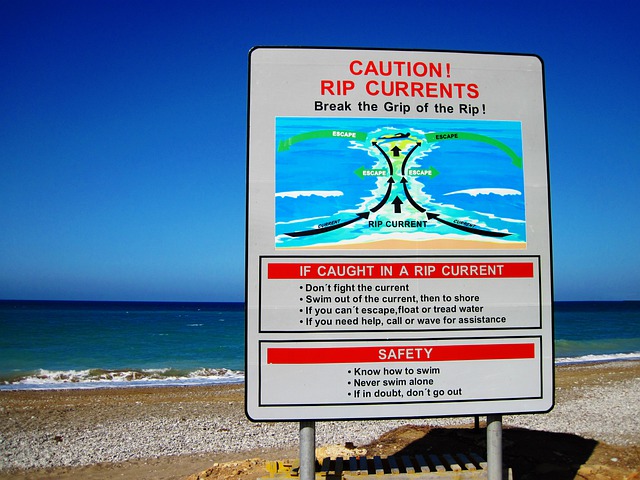Rip currents, or commonly called as riptides or undertows, are narrow, channeled water currents flowing away from the shore. These currents are commonly formed at low spots or breaks in sandbars near the beach shore, and near jetties and piers. While you don’t have worry about riptides while pool swimming, if you venture to the ocean beach, you must know how to spot them and how to survive them.
A typical rip current is 50-100 feet wide and may extend 100 yards out to sea. These currents can reach speeds of over 5 miles per hour which is faster than an Olympic swimming. Waves don’t have to be particularly high to have these current occur. They are strongest during low tides but can occur at any tide level. The weather doesn’t have to be bad for them to emerge. A passing storm far offshore can result in riptides.
Rip currents are often found where the you don’t see any waves breaking. You will see waves breaking on each side of the current but not in the actual outbound current. You may also notice that the water is darker in the current. Look for a line of foam or seaweed that is moving away from the shore. These currents are easier to spot from higher elevations.

If you ever find yourself being pulled out to sea, don’t panic. Try to get the attention of the lifeguard by waving your arms and yelling. Remember the current is faster than an Olympic swimmer so don’t try to swim toward shore against the current. Instead, swim parallel to shore. Remember a typical rip current is 50-100 feet wide so you should be able swim free of the current then swim to shore.

